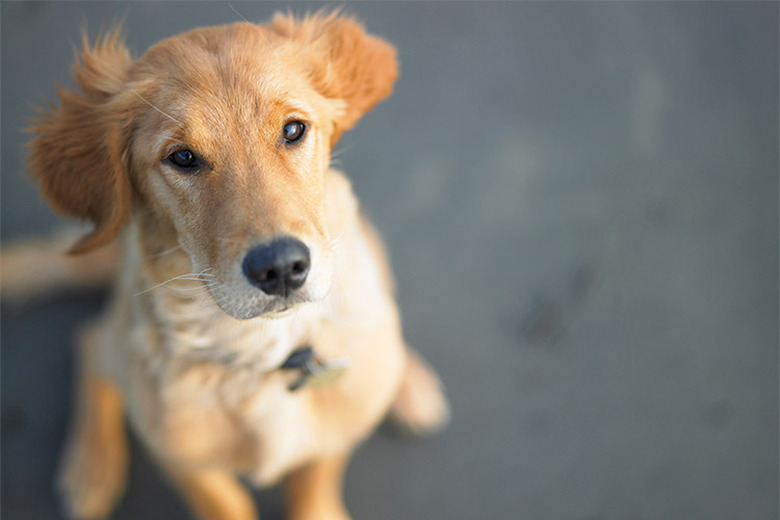How To Get A Pee Sample From A Girl Dog
No bones about it, collecting a urine sample from your dog can be a difficult task. To make matters tougher, female pooches commonly squat low to the ground to urinate, leaving you to wonder what the best tools are for collecting your sample. The trick is to discreetly slip a clean, shallow container or long-handled ladel under her while she pees. The good news is that you typically need only about a tablespoon of urine to perform a urinalysis, so don't worry if you can't get it all!
Collecting the Urine
When it's time to walk your dog, follow her closely while you wait for her to urinate. When she finally squats into position, slip shallow dish underneath the stream or urine — don't do it too suddenly, though, or you may spook your dog. If she squats low to the ground, you can also try a shallow long-handled ladel so you won't have to stoop down too low. The ladel may also be your best bet if the shallow dish makes her too uncomfortable. If she is shy, it may take several tries before she finally empties her bladder. Seal and store the urine, or deliver it to your vet according to his instructions. If after many attempts you aren't able to collect a sample, tell your vet. He or she may have to collect it in the office using a syringe inserted into the bladder through the abdomen, or through a catheter.
By Tom Ryan
References
Greenbriar Animal Hospital: How to Collect a Urine Sample From Your Dog
Vet West Animal Hospitals: Urine Sample Collection at Home
VCA Animal Hospitals: Urinalysis
About the Author
Tom Ryan is a freelance writer, editor and English tutor. He graduated from the University of Pittsburgh with a degree in English writing, and has also worked as an arts and entertainment reporter with "The Pitt News" and a public relations and advertising copywriter with the Carnegie Library of Pittsburgh.
Always check with your veterinarian before changing your pet's diet, medication, or physical activity routines. This information is not a substitute for a vet's opinion.
